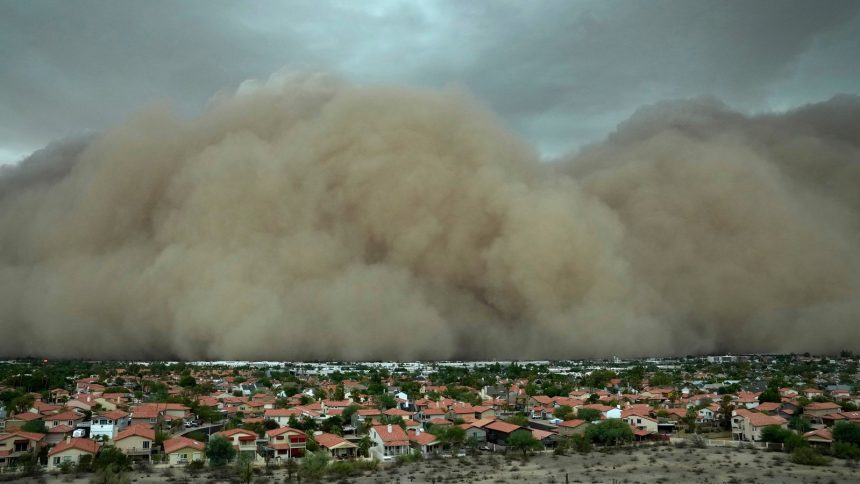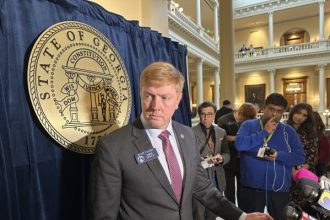On August 12, 2025, a tragic incident on the Florida Turnpike claimed the lives of three individuals when a commercial truck driven by Harjinder Singh, an Indian national, made an illegal U-turn and collided with a minivan. Investigations revealed that Singh lacked English language proficiency and was allegedly in the U.S. illegally. This event has prompted the Trump administration to take decisive action, threatening to withhold millions in federal funding from states that fail to enforce English proficiency requirements for commercial truck drivers.
The Executive Order: Enforcing English Proficiency
In April 2025, President Donald Trump signed an executive order titled “Enforcing Commonsense Rules of the Road for America’s Truck Drivers.” This directive mandates that all commercial drivers demonstrate proficiency in English, emphasizing its importance for safety, regulatory compliance, and effective communication with law enforcement. The order rescinds previous guidance that had diluted enforcement of these standards, aiming to ensure that drivers can read road signs, complete written logs, and communicate during inspections and emergencies .
The States at Risk: California, Washington, and New Mexico
Following the Florida crash, the U.S. Department of Transportation (DOT) launched an investigation into the enforcement of English proficiency rules in several states. The findings were concerning:
California: Despite over 6,000 safety violations detected during inspections, only four drivers were removed from service for language issues.
Washington: No drivers were disqualified for language violations, even though numerous safety infractions were noted.
New Mexico: No drivers were taken out of service for English proficiency issues, and a recent roadside inspection failed to include a language test .
Transportation Secretary Sean Duffy announced that these states have 30 days to comply with federal regulations or face the loss of up to 100% of their Motor Carrier Safety Assistance Program (MCSAP) funding. For California, this could mean a loss of $33 million; Washington could lose $10.5 million; and New Mexico stands to lose $7 million .
The Rationale: Safety and Accountability
The administration’s stance is clear: English proficiency is a non-negotiable safety requirement. Secretary Duffy emphasized that drivers must be able to understand road signs, communicate with law enforcement, and report accidents accurately. The Florida crash underscored the potential dangers of lax enforcement, highlighting the need for stringent compliance with language standards to ensure public safety .
Industry and Political Reactions
The trucking industry has largely supported the enforcement of English proficiency standards, viewing it as a necessary step to enhance safety and professionalism. However, some critics argue that the policy may disproportionately affect foreign-born drivers and could exacerbate the existing driver shortage.
Politically, the issue has sparked tensions between state and federal authorities. Governors of the affected states have pushed back, citing legal challenges and questioning the fairness of the enforcement measures. California, for instance, contends that Singh was legally licensed, and New Mexico points to body-camera footage suggesting that Singh understood English during a police stop .
Broader Implications: Immigration and Workforce Dynamics
This policy intersects with broader debates on immigration and workforce dynamics. The Trump administration’s actions reflect a commitment to enforcing immigration laws and ensuring that only qualified individuals operate commercial vehicles. The decision to halt employment visas for truck drivers further underscores the administration’s focus on controlling the influx of foreign workers in the trucking industry .
The Arizona Haboob of August 2025
The haboob that struck Arizona in August 2025 was particularly severe. It was triggered by a southeastern weather front that brought strong winds, rain, and lightning to the region.
- The storm caused widespread disruptions:
- Power Outages: Tens of thousands of residents in Maricopa County were left without power.
- Flight Delays: Phoenix Sky Harbor International Airport experienced delays due to water leaks and damage.
- Hazardous Driving Conditions: Visibility was reduced to near zero, leading to dangerous driving conditions.
The Science Behind Haboobs
Meteorologists explain that haboobs are generated by thunderstorms that produce downdrafts stirring up loose dirt and dust. The storm’s ability to grow depends on continued thunderstorm activity and susceptible terrain, such as Arizona’s arid farmlands.
The National Weather Service issues warnings when visibilities are expected to fall below a quarter mile.
The Impact of Climate Change
While it’s uncertain whether haboobs are becoming more frequent, scientists link stronger monsoons, prolonged droughts, and more intense storms to climate change.
These changes can increase the intensity of dust storms, making them more dangerous and disruptive.
Safety Tips During a Haboob
- If you’re caught in a haboob, follow these safety guidelines:
- Pull Off the Road: If driving, pull off the road and turn off your lights.
- Avoid Following Taillights: Don’t follow the taillights of the vehicle in front of you; it can lead to accidents.
- Stay Indoors: If you’re at home, stay indoors and away from windows.
- Secure Loose Objects: Strong winds can turn loose objects into projectiles.
FAQs
Are haboobs only found in Arizona?
No, haboobs can occur in any arid region. They are common in parts of Africa and the Middle East and have been observed in other parts of the United States, including Nevada, New Mexico, and Texas.
How can I prepare my home for a haboob?
Ensure that windows and doors are sealed properly. Secure outdoor furniture and objects that could become airborne. Keep emergency supplies, such as flashlights and batteries, on hand.
What should I do if I’m driving during a haboob?
This policy highlights the administration’s focus on road safety, immigration enforcement, and the qualification of commercial drivers, marking a pivotal moment in transportation regulation.
How long do haboobs typically last?
Haboobs usually last from a few minutes up to several hours, depending on the size of the storm and the persistence of the storm-producing thunderstorm system. The dust may linger even after the main storm passes, causing poor air quality for hours.
Can haboobs cause health problems?
Yes. The dust and particles in a haboob can worsen respiratory conditions such as asthma, bronchitis, or COPD. Even healthy individuals may experience eye irritation, coughing, or shortness of breath. Wearing masks and staying indoors can reduce exposure.
How do meteorologists predict haboobs?
Meteorologists use satellite imagery, radar, and weather models to identify conditions conducive to haboobs, such as dry soil, high winds, and thunderstorm activity. The National Weather Service may issue Dust Storm Warnings when visibility is expected to fall below a quarter mile.
Are haboobs dangerous to aviation?
Absolutely. Haboobs reduce visibility drastically and can damage aircraft engines due to sand and dust ingestion. Pilots often delay flights or reroute aircraft until the storm passes. Airports in the Southwest U.S. frequently monitor haboob activity during monsoon season.
Can haboobs affect the environment?
Yes. While they can help distribute nutrients like iron and phosphorus over large areas, they can also erode soil, damage crops, and contaminate water sources with dust and debris.
Conclusion:
The Trump administration’s threat to withhold federal funding from states that fail to enforce trucker English proficiency rules represents a significant shift in transportation policy. It underscores the administration’s commitment to road safety, regulatory compliance, and the enforcement of immigration laws. As the 30-day deadline approaches, the affected states face a critical decision: comply with federal standards or risk losing vital safety funding.














